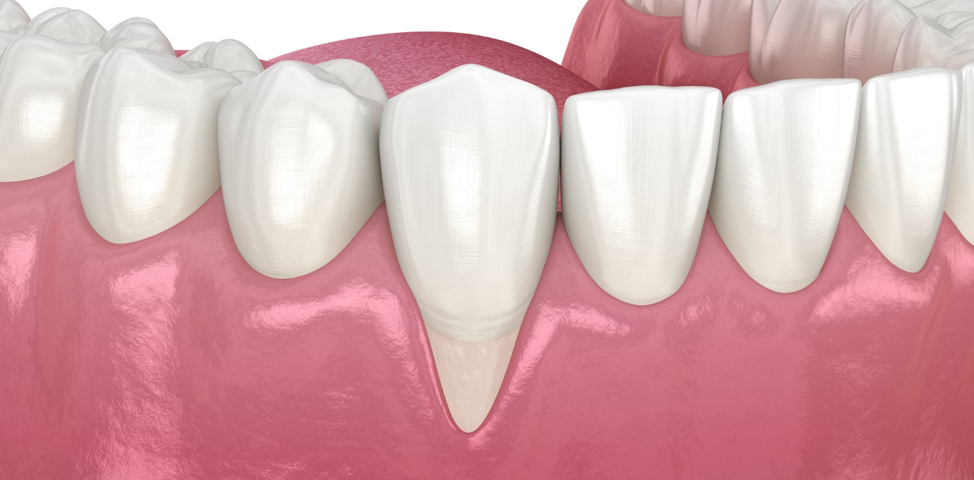
Suffering from debilitating jaw pain? Click here to learn about effective TMJ treatment
February 26, 2021
How to Extend the Life of Your Dental Bridge
March 12, 2021Have you ever heard someone say about another person that he or she is “looking long in the tooth”? This phrase was popular among horse judges in the 18th century who would determine a horse’s age by the length of its teeth even though the horse’s teeth weren’t actually getting longer, the gums (or gingiva) were getting shorter! Over time, it has become a common phrase to describe someone older or too old to be doing a certain thing.
Gum recession occurs for various reasons, including aging. This poses several health risks, but thankfully there are a few different treatment options for this oral health problem. In this blog, we’ll discuss the common causes and most effective treatments for gum recession.
Causes of Gum Recession
Healthy teeth require healthy gums and vice versa. Gum recession leaves the teeth even more vulnerable to decay and causes serious discomfort. As the gingiva pulls away from its natural place, it exposes the very sensitive tooth root, making it difficult to eat and drink certain things. Eventually, gum recession can lead to tooth loss and the need for extensive and expensive dental treatments.
Understanding what causes gum recession is one of the best ways to help patients avoid it.
Common causes of gum recession include:
- Gum (periodontal) disease
- Trauma to gums or teeth
- Ill-fitted dentures
- Brushing too hard
- Tobacco use
- Genetics
- Hormonal changes
- Diabetes
Whatever the cause of a person’s gum recession, they typically experience some combination of these symptoms:
- Teeth appearing longer
- Sensitivity to hot and cold substances
- Loose teeth
- Bleeding gums
- Persistent bad breath
- Visibly exposed tooth roots
- Pain at the gum line
The Pinhole Surgical Technique Procedure
When it comes to treating gum recession, our experienced dentist recommends one treatment: the pinhole surgical technique procedure.
Compared to other common treatments, like gum grafting, the pinhole technique provides several benefits, such as:
- Lower chance of complications
- Faster recovery
- Minimal bleeding, swelling, and discomfort
- Blade- and suture-free
- Eliminates the need for an additional surgical site.
Here are more details about the pinhole surgical technique procedure:
Dr. John Chao created the procedure in 2006 and it has been proven successful ever since. To begin the surgery, the dentist numbs the gums with a local anesthetic. Then, she inserts a tiny needle into the tissue above the tooth being treated. With a special tool, she gently massages and loosens the gums back to position. Once the gingiva is in its natural place, the dentist inserts tiny collagen strips into the hole made by the needle. These strips secure the gums and encourage healing.
The procedure may take between one and two hours per tooth. Once complete, the dentist will provide instructions for the recovery which usually includes taking over-the-counter pain medication to reduce discomfort for the first 24 hours, gentle brushing, and avoiding hard-to-eat foods.
By the next day, patients should notice a more contoured gum line and the small holes in the gingiva should be completely healed. Aside from minor swelling and discomfort for the first 24 hours, patients shouldn’t experience any other symptoms.
Gum Recession Treatment in Grant Park
Receding gums is a serious oral health problem that should be addressed immediately. Dr. Abbey Lee at Smiles for Grant Park offers relief and resolve with the pinhole surgical technique treatment. Call our office today at (404) 328-7177 to schedule your initial consultation.


